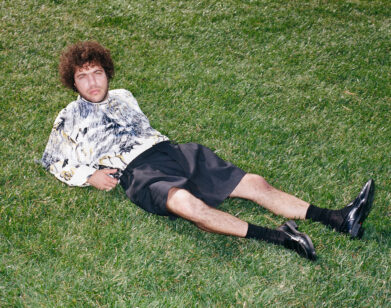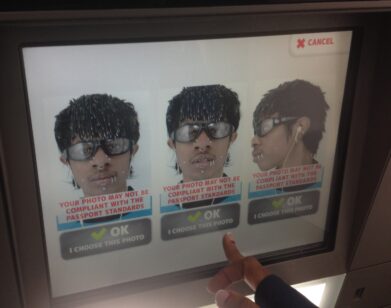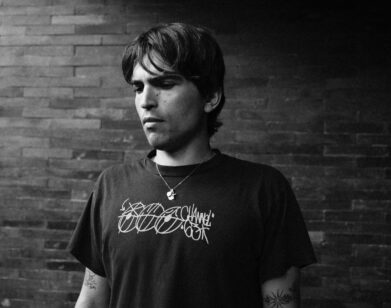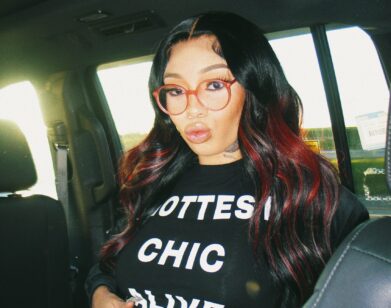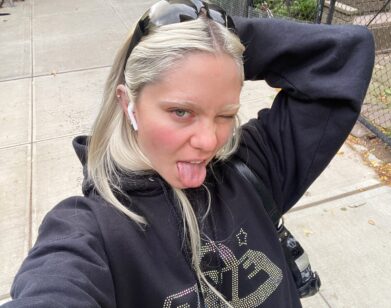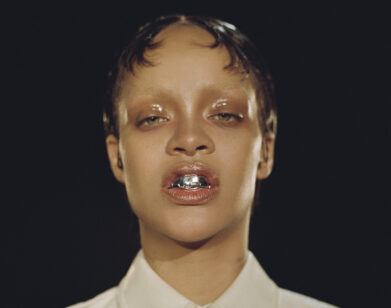Big Sean’s Hall Pass
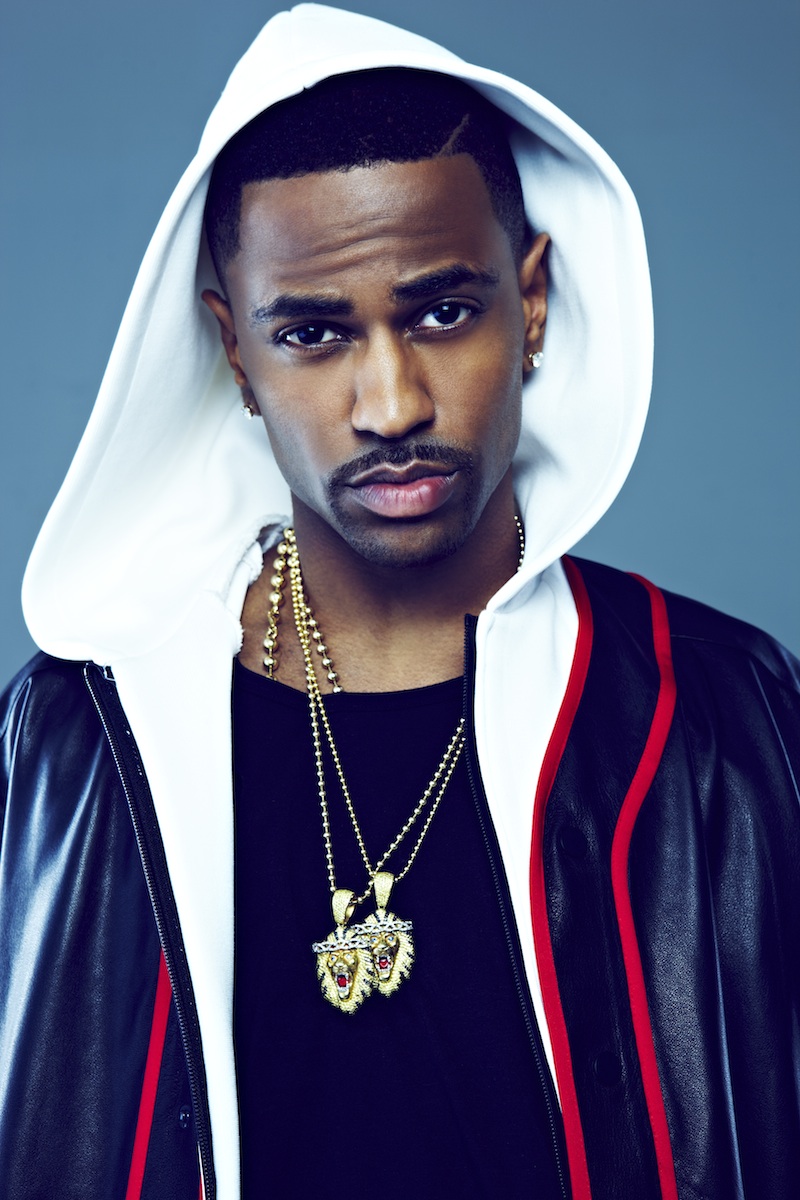
ABOVE: BIG SEAN
Big Sean has come a long way since his storybook introduction into G.O.O.D. Music (he rapped for initially disinterested label head Kanye West as he was leaving a Detroit radio station, and West offered a record deal on the spot), but you would never know it by his attitude. The 25-year-old rapper is humble, exceptionally honest, and extremely engaging—which shows in his sophomore effort Hall of Fame, wherein he addresses everything from family to a former girlfriend. Over the past few years, Sean has developed into an artist entirely unique, with signature catchphrases, star collaborations (this album features Nicki Minaj, Miguel, and Lil’ Wayne to name a few) and one of the most inventive flows that hip-hop has seen in the past decade. With Hall of Fame, he throws his hat in the ring to fight for this year’s rap crown (Kendrick Lamar has noticed: his competitive and controversial “Control” verse mentions Sean as one of the rappers whose career he’d like to kill). We spoke to the rising star about his new release, Kanye’s influence, and why Miley Cyrus is the star of one of his music videos.
ALEX CHAPMAN: What have you been up to in the past few days? I’m sure there’s been plenty of promo and press.
BIG SEAN: Well, that song [“Control”] dropped, which is awesome. Promoting the album—”Beware” video just dropped. It’s just a great time, and I’m excited to be a part of hip-hop, to be a part of rap, and deliver something that isn’t necessarily being delivered right now. Kanye’s guidance is really helping a lot as far as visuals, and [G.O.O.D. Music’s creative team] DONDA and [Art Director/Photographer] Matt Williams. And the songs have been getting great receptions, from “Fire” to “Beware” to “Control.”
CHAPMAN: Everything I’ve heard sounds like you are taking things to the next level, in terms of having bigger production but also having more to say.
SEAN: I wanted to come from a place where I talk about things. I’m a dreamer first and foremost—I lived in my mom’s house, writing all these goals down, from the house I wanted to buy to all the things that I have accomplished so far. I just want to teach people the methods that I thought of, and maybe it can apply to them and they can be inspired to contribute to what they got going on. I believe in the concept of planning your goals out and writing them down, to a further extent by calling my album Hall of Fame and putting that out into the universe.
CHAPMAN: So the Hall of Fame is where you want to be?
SEAN: When it’s all said and done, at the end of my career I want to be in the Hall of Fame. Whether it’s the Rock N’ Roll Hall of Fame—hopefully they have a Hip-Hop Hall of Fame. By any means I don’t think I’m in the Hall of Fame yet, but that’s the whole concept behind it.
CHAPMAN: Do you write goals down on paper?
SEAN: I kind of just write things in my head, and then after I’ve memorized it in my head I’ll say it in my phone, like on the voice recorder, just so I can keep it moving.
CHAPMAN: I assume you do that with lyrics sometimes too.
SEAN: I find sometimes when I write lyrics down it slows me down, just because that’s two different modes for me. I go in a mode of coming up with ideas and then I have to write them down, sometimes I lose that inspiration in that short of amount of time. So for me, it’s easier to keep in that creative mode and not even write it down.
CHAPMAN: Is it crazy to think about which of your records started as a voice memo?
SEAN: There are voice memos for like every song, I’ve probably been doing that for the past three years. It’s crazy to see shit unfold like that. Songs like “Clique”—I was just messing around and then I came up with it, I didn’t even think anything of it. Next thing I know, it’s a record. Or with [one of Sean’s catchphrases] “swerve”—that’s just some silly shit that I was messing around with, my friends and I would always say it. Now it’s a big thing—I see shirts and merchandise that say “Swerve” on it.
CHAPMAN: There’s not that many people with catchphrases that have stuck as well as yours. Is that something you were doing from the jump?
SEAN: Kanye was the one who inspired me to think like that, early on when he first took me under his wing. He’d be like, “You sound like this,” or, “You sound like me, you’ve got to figure out ways to set yourself apart.” I was like, “Man! The hell you mean?” He was like “Well [Young] Jeezy got ‘Ha ha!’ and ‘Chyuh!’ Why don’t you come up with your own ad-libs? Do something people aren’t doing.” So the first I came up with was “Boy,” and then I came up with “Oh God,” and then “Swerve.” I got some more coming. When I started having fun with it and stopped trying to be critical or hard on myself, that’s when the best work came.
CHAPMAN: Hall of Fame seems elevated from a promotional standpoint—you have two videos out, you were on Jimmy Kimmel, you’re doing a major artist rollout for this, to a bigger degree than with Finally Famous, and there’s definitely a greater anticipation for this album. How does it feel to have a more pumped-up release?
SEAN: Man, that’s good to know, because from the inside looking out you can never see how it looks from the outside looking in. If you say that people are excited about it and it’s gonna be a big deal, then that is awesome. I work really hard—that doesn’t mean I deserve anything, but it’s really cool to see the positive reaction people give to something you worked so hard on. It’s one of the best feelings. I was just talking to my publicist about how she picked me up in a sketchy-ass hotel five years ago, when I didn’t have any songs out. Now I got platinum records, got a plaque the other day for selling 10 million singles—it’s great.
CHAPMAN: Your whole aesthetic seems more developed this time around. The “Beware” video is different for you, and the song is definitely not in the same vein as a club track like “Ass.”
SEAN: “Beware” is a song that people who’ve been in that situation will relate to in a different way, on a deeper level. As an artist I have a lot to offer, and that’s just a different flavor—I don’t want to make a song like “Ass,” because I did that already. I feel like every single I drop has something different to offer. As far as an artistic view, DONDA has really stepped in and made everything really cohesive, from the track list to the videos. It feels like an organized moment for me. It kinda all ties in together.
CHAPMAN: There’s also the “Fire” video that almost exclusively stars Miley Cyrus. Who made that call?
SEAN: I came up with the idea for that. I was going over to creative with Matt Williams, and we all thought it was a good idea. Miley Cyrus was following me on Twitter and I was like “Damn, well, she follows me on Twitter so let me just take a crack at reaching out to her.” So I hit her up on DM and she hit me back and was like, “Hell yeah, I’m definitely interested.” I explained the idea a little bit and told her if she wanted to hear more to hit me up, and she did. We met up in the studio because we were in the same city, I played her my album and she really liked it a lot. She played me her album and I liked it a lot too, and it was tight because they are completely different projects. So she said she really wanted to be a part of the album, and that seemed like the perfect way to tie her into it.
CHAPMAN: How do you feel she represents the track?
SEAN: “Fire” is a song that tells so many stories at once. I talk about my grandma’s wise words, about riding to school with my dad and him telling me about his old girlfriend—all these different things that are a part of growing up. Miley was perfect because she has her own story about being a girl who’s been through a lot and remaining victorious, and we’ve seen her evolve. So it’s great to use her for a metaphor, not just for women but for people to come out powerful and make it through their own personal fire, and remaining as beautiful as a rose. That’s why we always had the rose [in the video] tied in with her. It was great she was able to tell that story; and it’s ideas like that, when they’re executed, that make things bigger and better.
CHAPMAN: It’s crazy that all that can start with a DM—Twitter just gives you a direct line to so many people.
SEAN: That’s how I started talking to [girlfriend] Naya [Rivera]—on DM. [laughs]
CHAPMAN: That’s wild. You’re pretty big on Twitter.
SEAN: It’s a direct line to your fans too, that’s the plus side—there are a lot of downsides, but a lot of upsides to things like that.
CHAPMAN: You’ve seen G.O.O.D. Music go through some changes—I remember when the roster was GLC, Consequence, Really Doe. It was just a completely different vibe, so I’m curious what it’s been like to experience that evolution.
SEAN: It’s crazy how much it has changed, but I think it’s always kept its aesthetic as a cool, quality, artistic crew that delivers above average content and has something different to offer than Young Money, Maybach Music and other labels. It’s something special and I think it’s a reflection of Kanye West and his vision, his dynasty.
CHAPMAN: I know you have a song with Cudi called “First Chain,” which also features Nas, on the album—he left G.O.O.D. Music recently.
SEAN: There’s a moment at the end of that song—and Cudi recorded this after he left G.O.O.D. Music-where he says, “G.O.O.D. Music, man, forever.” I think that’s gonna be an awesome moment for the fans who really cared about Cudi leaving G.O.O.D. Music and may have felt a certain way towards Cudi or Kanye. But it just goes to show that it’s deeper than an imprint on a piece of paper—we’re brothers. The things we’ve been through together and the times we’ve shared bring us closer. That was a special moment for me on my album.
CHAPMAN: A lot of people have been talking about the Kendrick Lamar verse on “Control,” how he lists off a bunch of rappers, including you, and then basically says he’s going to ruin their careers. I know you’ve said pretty much everything you can say about this, but I’m curious about whose idea it was to put out a seven-minute track with straight rapping like this. It promotes a kind of competition that’s been pretty dormant in mainstream hip-hop for the past few years.
SEAN: It was me and NO ID’s idea—he was the album producer and had a lot of say-so on this album. He told me the beat was something special. I came up with my verse, hit up Jay Electronica, and then it was just us two. Kendrick actually hit me up randomly—we’re homies before everything—and was like “If you got anything, send it over.” I sent him this song and my verse, he heard it and loved it. He was like, “Give me a few days and I’ll come up with something.” He came up with something, and obviously he’s on there spitting and name-dropping and I was like, “Shit!” [laughs]
CHAPMAN: How do you feel about that?
SEAN: I took it like, “This is great sportsmanship, it’s entertaining, people want to hear this.” I didn’t go back and change my verse or try and name drop—I could’ve done that but I feel like it’s not ethical. I believe in being honest—I love my verse.
CHAPMAN: Tell me a bit more about the process behind the album.
SEAN: I recorded about 95 percent of it in NO ID’s studio in LA. It’s easier to record there than in New York and Detroit, because the space in LA is green, and there’s sunshine, and I need all those positive vibes. Plus it’s always good to have NO ID close to stop through or make stuff. That’s the formula, and it worked out pretty good.
CHAPMAN: You said before you are really addressing some stuff on this album, a lot of it personal—what would you say is a standout in terms of that?
SEAN: “Ashley” is a song where I’m really opening up—it’s about my old girlfriend, and I wrote the song while me and her were still dating. We broke up, and then now I’m in a brand-new relationship with Naya, but the song is good, and I didn’t want to change the title of the song or not use the song just because it’s about my old girlfriend. It’s a real song that I feel like people will enjoy and be inspired by. Naya has heard it, and she loves it. My relationship currently is the one I’m concerned about—if she’s good with it I’m good with it.
CHAPMAN: How do you think being in a relationship influences you musically?
SEAN: I feel like my album was like what my life was in the last year, minus like five months ago. So the last five months of my life will probably be more so talked about on my next album. I got new music I’m making that sounds completely different from Hall of Fame.
CHAPMAN: Can you speak on that, or is too soon?
SEAN: I know what I’m calling the next album, but I’m not going to announce it yet. Not quite sure about the full direction, but I kinda got an idea.
CHAPMAN: What’s going on with your clothing line, Aura Gold?
SEAN: Aura Gold is something we just now are getting to the point where we are all excited. We got some awesome cut-and-sew pieces—I’ve been Instagramming it lately. Some stressed denim jackets, fresh drop-crotch sweats, all these things that I buy other places that cost $300, and we made the same quality, some even better, for under $100, and t-shirts in the $24 range. It’s exciting to see that come to fruition and give back and that way, because I always try and find ways to give back, like with my [Sean Anderson] foundation. Just giving back to the school-aged youth—I know it’s hard to afford good-quality clothes in general now, and it’s good that I can give back in the way of providing that.
CHAPMAN: What else do you have going on surrounding your release?
SEAN: I already locked in a tour with Kid Cudi so you can expect us to go on tour in September and October together. Then after that, I’m going to announce my headlining tour, which we’ve been getting together. I’m elevating my music as an artist, elevating the music videos, and I’m elevating—using the same team—my touring. So my next headlining tour will be next-level, and we are going to try to do something that’s never been done before.
BIG SEAN’S HALL OF FAME IS OUT TOMORROW, AUGUST 27. FOR MORE ON THE ARTIST, VISIT HIS WEBSITE.

